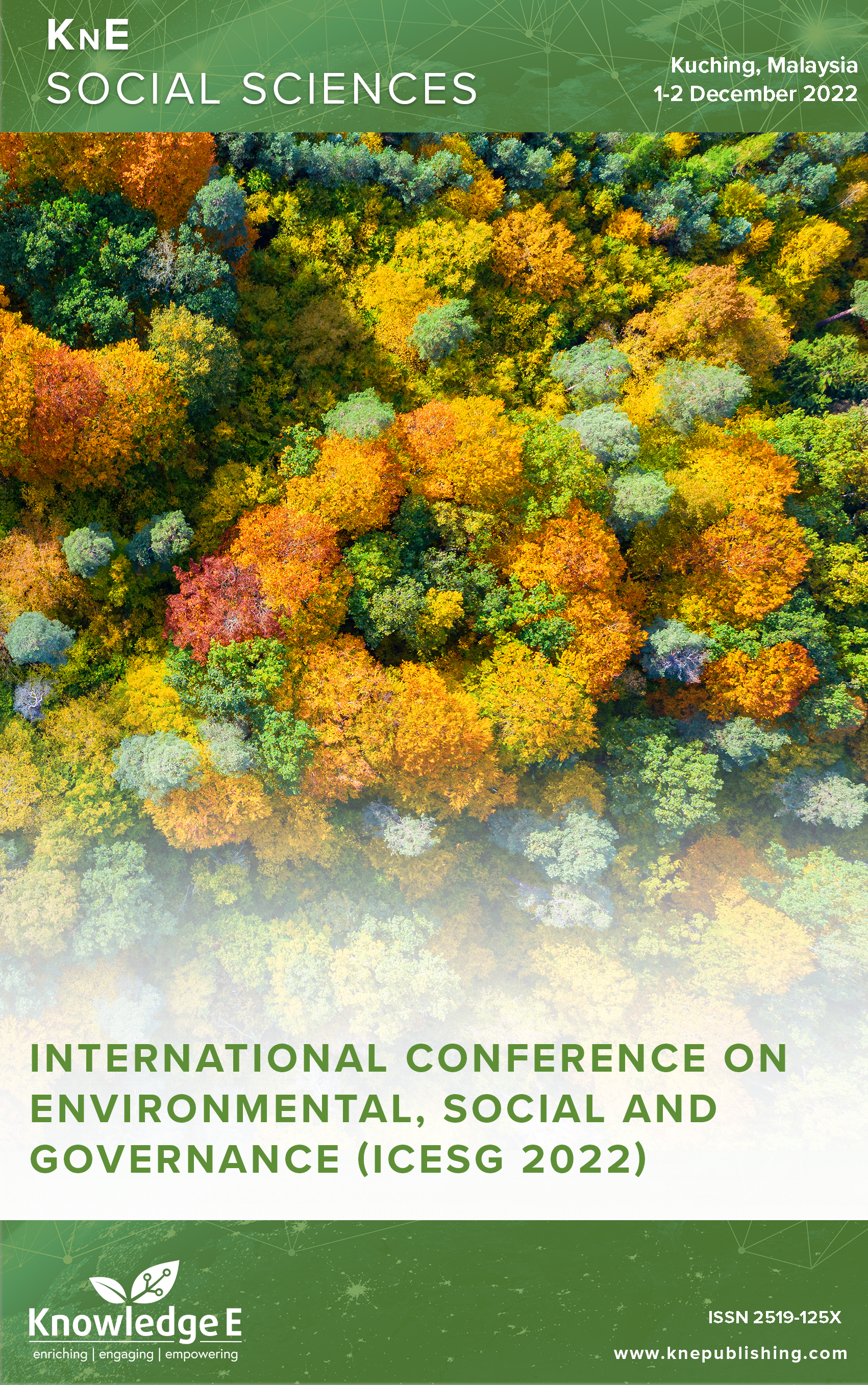A Proposed Framework for Assessing BNPL (Buy Now, Pay Later) Adoption and its Impact on Consumers' Buying Behavior
DOI:
https://doi.org/10.18502/kss.v8i20.14639Abstract
Buy Now, Pay Later (BNPL) services allow retailers and enterprises to offer their consumers installment-based payment plans to help them manage their personal finances. As such, this research aims to examine the impact of BNPL services on consumer buying behavior. BNPL services are segmented into a convenient payment system, flexible repayment system, and accessible credit system. The study proposed primary data to be collected from Malaysian youth aged between 18 to 40 years through questionnaire. Partial Least Square-Structural Equation Modeling (PLS-SEM) is proposed to analyze the data. The conceptualized framework is underpinned based on the Diffusion of Innovation (DOI) theory that suggests that the adoption of BNPL services has a significant and positive impact on consumer buying behavior. This study will provide insights for regulators and industry players to decide BNPL’s future and to enhance its availability and adoption among the consumers.
Keywords: BNPL services, convenient payment system, flexible repayment system, and accessible credit system, diffusion of innovation theory
References
[2] C. Symeonides et al., “Buy-now-pay-later : Hazards to human and planetary health from plastics production , use and waste,” vol. 57, no. September, pp. 1795–1804, 2021, doi: 10.1111/jpc.15777.
[3] L. Schomburgk and A. Hoffmann, “How mindfulness reduces BNPL usage and how that relates to,” vol. 57, no. 2, pp. 325–359, 2023, doi: 10.1108/EJM-11-2021-0923.
[4] Y. Ji, X. Wang, Y. Huang, S. Chen, and F. Wang, “China Economic Review Buy now , pay later as liquidity insurance : Evidence from an early experiment in China,” China Econ. Rev., vol. 80, no. May, p. 101998, 2023, doi: 10.1016/j.chieco.2023.101998.
[5] M. Kashif Shad and F.-W. Lai, “Enterprise Risk Management Implementation and Firm Performance: Evidence from the Malaysian Oil and Gas Industry,” Int. J. Bus. Manag., vol. 14, no. 9, p. 47, 2019, doi: 10.5539/ijbm.v14n9p47.
[6] M. Kashif Shad, F.-W. Lai, A. Shamim, and A. Ali Khan, “Platform-A journal of management & humanities corporate sustainability reporting practices in the Malaysian oil and gas companies,” Platf. - A J. Manag. Humanit., no. December 2018, pp. 2–10, 2018.
[7] T. Akana, “Buy Now , Pay Later : Survey Evidence of Consumer Adoption and Attitudes,” no. June, 2022.
[8] Z. Bezhovski, “The Future of the Mobile Payment as Electronic Payment System,” Eur. J. Bus. Manag., vol. 8, no. 8, pp. 127–132, 2016.
[9] O. Thein, “Ohnmar thein (mbf-5,” 2019.
[10] R. Weber, O. Mußhoff, and M. Petrick, “Diskussionspapiere Discussion papers How flexible repayment schedules affect credit risk in agricultural microfinance How flexible repayment schedules affect credit risk in agricultural microfinance,” Dep. für Agrar. und Rural. Entwicklung, no. 1404, p. 35, 2014.
[11] M. Faheem and R. A. Butt, “Big datasets of optical-wireless cyber-physical systems for optimizing manufacturing services in the internet of things-enabled industry 4.0,” Data Br., vol. 42, p. 108026, 2022, doi: 10.1016/j.dib.2022.108026.
[12] T. Krause and D. Fischer, “Social Credit Rating,” Soc. Credit Rat., no. January 2021, 2020, doi: 10.1007/978-3-658-29653-7.
[13] M. M. Ajmal, M. Khan, M. K. Shad, H. AlKatheeri, and F. Jabeen, “Empirical examination of societal, financial and technology-related challenges amid COVID-19 in service supply chains: evidence from emerging market,” Int. J. Logist. Manag., vol. 34, no. 4, pp. 994–1019, 2023, doi: 10.1108/IJLM-04-2021-0220.
[14] S. Q. A. Shah, F. W. Lai, M. K. Shad, M. Malik, and K. F. Sadriwala, “Basel III and Firm Performance: A Lens of Managerial Ownership,” Eurasian Stud. Bus. Econ., vol. 23, pp. 237–249, 2022, doi: 10.1007/978-3-031-14395-3_13.
[15] Fahad and M. Shahid, “Exploring the determinants of adoption of Unified Payment Interface (UPI) in India: A study based on diffusion of innovation theory,” Digit. Bus., vol. 2, no. 2, p. 100040, 2022, doi: 10.1016/j.digbus.2022.100040.
[16] M. K. Shad, F. W. Lai, A. Shamim, M. McShane, and S. M. Zahid, “The Relationship Between Enterprise Risk Management and Cost of Capital,” Asian Acad. Manag. J., vol. 27, no. 1, pp. 79–103, 2022, doi: 10.21315/aamj2022.27.1.4.
[17] S. Moghavvemi, T. X. Mei, S. W. Phoong, and S. Y. Phoong, “Drivers and barriers of mobile payment adoption: Malaysian merchants’ perspective,” J. Retail. Consum. Serv., vol. 59, no. October 2020, p. 102364, 2021, doi: 10.1016/j.jretconser.2020.102364.
[18] M. K. Shad and F. Lai, “Developing an Enterprise Risk Management Value Enhancing Model Manifested Through Economic Value Added Analysis,” Recent Adv. Comput. Sci., pp. 234–239, 2015.
[19] J. Rodriguez and J. Rodriguez, “Strategies for Cryptocurrency Adoption in Contemporary Walden University This is to certify that the doctoral study by,” 2022.
[20] S. Q. A. Shah, F. W. Lai, M. K. Shad, and A. A. Jan, “Developing a Green Governance Framework for the Performance Enhancement of the Oil and Gas Industry,” Sustain., vol. 14, no. 7, 2022, doi: 10.3390/su14073735.
[21] F.-W. Lai, M. K. Shad, and S. Q. A. Shah, “Conceptualizing Corporate Sustainability Reporting and Risk Management Towards Green Growth in the Malaysian Oil and Gas Industry,” SHS Web Conf., vol. 124, p. 04001, 2021, doi: 10.1051/shsconf/202112404001.
[22] A. Tella and I. Abdulmumin, “Predictors of Users’ Satisfaction with E-payment System: a Case Study of Staff at the University of Ilorin, Nigeria,” Organizacija, vol. 48, no. 4, pp. 272–286, 2015, doi: 10.1515/orga-2015-0018.
[23] H. Zhao, H. Peng, and W. Li, “Analysis of Factors Affecting Individuals’ Online Consumer Credit Behavior: Evidence From China,” Front. Psychol., vol. 13, no. July, 2022, doi: 10.3389/fpsyg.2022.922571.

